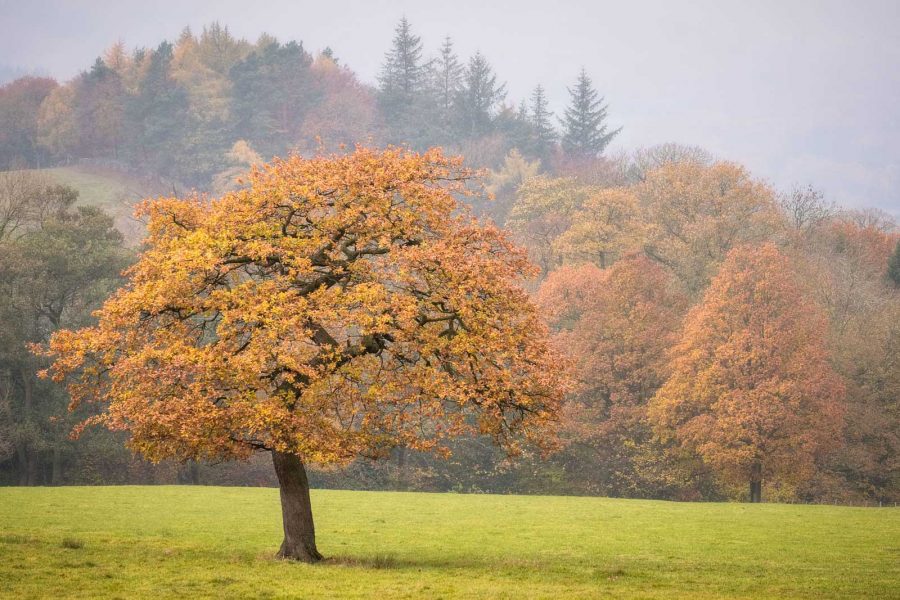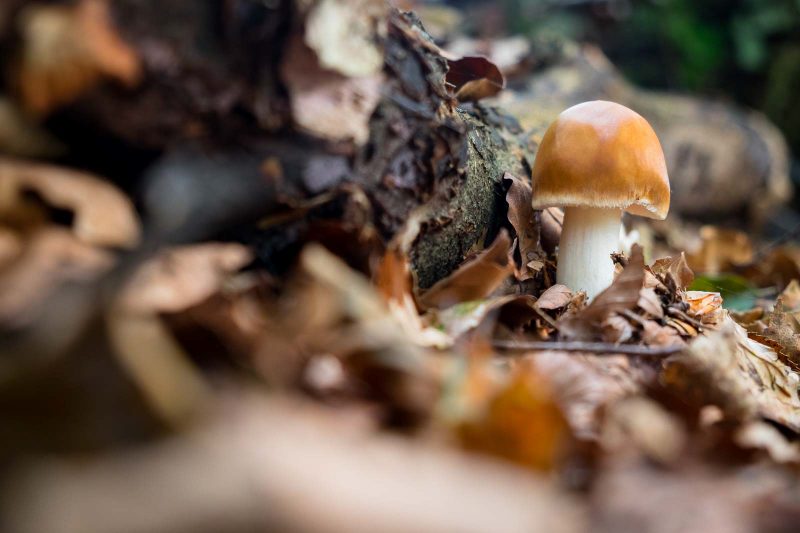6 Ways to Take Better Autumn Landscape Photos

Autumn is a time of change. A time when plants and animals prepare themselves for the cold and dark of the approaching winter. As nights begin to draw in and temperatures cool, the landscape transforms from the lush, verdant greens of summer to a beautiful palette of golden and russet tones. A time of leaf covered paths, morning mists, glistening, dew covered spider webs and crisp frosts. Autumn has a beauty all of its own and offers many unique and exciting landscape photography opportunities. Let’s look at some ideas for autumn landscape photography.
1. Finding autumnal scenes
When considering the best places to capture autumnal scenes, you might immediately think of deciduous woodlands – and this is probably justified as they offer a wide variety of wonderful shooting options. From intimate landscapes to wider views, from the forest floor to the tree canopy, these places are a treasure trove of seasonal beauty that must be explored.



There are many other places where autumn views can be found, though. Lowland heaths, valley floors, lakes and wetlands are good places to find early morning mists. Keep an eye out around farmland verges for old broad-leaved trees and berry filled hedgerows.
In the fields, you may be lucky enough to find a lone tree or small copse on a hillock. Higher up on moorland and fells, look for waning bracken offering up beautiful golden hues or silver birches and their delicate, yellow leaves.
In towns and cities head to your local parks for leafy, tree lined paths.
For the most part, you don’t have to travel far to capture autumnal views. Familiarising yourself with, and photographing, your local area is a distinct advantage at this time of year. It means that you are able to easily monitor how the season is progressing, and get to know the way certain weather effects nearby locations.
Having the ability to get to places quickly when conditions are at their best greatly improves your chances of getting that perfect shot.
2. Taking advantage of autumn weather
With autumn comes a change in the weather. Cooler temperatures, especially overnight, and increased moisture lead to a greater chance of morning mists and frosts. The beautiful, ethereal quality of mists can add mood to images and make for more atmospheric landscape photographs.
In woodlands, look for shafts of light as mist is illuminated by dappled sunlight through the tree canopy, or use it to add a sense of depth and declutter chaotic scenes.
If you’re out in the open, try getting above the mist to capture it as it blankets a valley floor. You’ll see it laying amongst the trees, fields, farms and tranquil villages, adding a dream-like quality to your images.
Watch: How to Photograph Woodlands – Trees, Streams, and Fungi

Mists often occur after cold, clear, and still nights. They are dynamic, fickle, and can be quite transient. To increase your chances of finding misty conditions, keep an eye on the weather forecast for when the mercury drops and the skies are clear. Look at the predicted visibility at the time for the location you intend to be taking your autumn photos at, as this can also help you to predict a good show.
Get out early. Try and be at your location and ready to shoot before dawn. Once the sun comes up and the air begins to warm, mists become far more active and, on occasion, dissipate very quickly.
Read more: How to Photograph Magical Morning Mist
Be adaptable. Mist can be very localised. If everything is pointing to good conditions for mist and you turn up at your planned location and it’s clear, it can quite often be the case that round the bend in the valley or on the other side of the hill conditions are perfect. Try and have several nearby locations in mind and be prepared to move on if things aren’t working.
Frosts appear on cold, clear nights (even in the early days of autumn) and can transform dull, wet landscapes to enchanting and delicately frozen scenes.
Shoot close ups or macro of frost to capture its fragile, icy crystals on grasses, reeds, plants and leaf litter, or shoot wider landscapes capturing its chilled, white veil over fields and paddocks.
3. Using the golden hour to enhance your autumn images
Golden hour (the hour just after sunrise or before sunset) is a fantastic time during any season to shoot landscapes. The warmer tones and quality of light provided by these times of the day can especially help to enhance the oranges, reds and yellows seen in autumnal foliage.
Instead of photographing the sunrise or sunset, try shooting with the sun behind you (or better still off to the side slightly), consequently bathing your subject in beautiful warm light. This helps you to accentuate the autumn tones and adds drama and depth through the shadows created by the angle of light.
Read more: Golden Hour Photography – A Landscape Photographer’s Guide
4. Shooting details
Shooting intimate landscapes is a great way to draw focus on the smaller elements in the environment that let us know it is autumn. Fungi are especially abundant at this time of year.
Get down on their level and shoot with a shallow depth of field to give that feeling of being down in among the leaf litter with them.
Further Reading: How to Photograph Fungi
The leaves of trees and plants change colour at different rates. Look for areas where any green leaves are near leaves that have already turned. The contrasting colours often work beautifully together and give a real sense of the changing seasons. Watch out for partially eaten, torn or rotting leaves as these can detract from the overall composition.
In the early part of autumn, berries, fruits, and nuts are common in trees and along hedgerows. Try getting some close-ups and macro shots of blackberries, hawthorn berries, conkers, sweet chestnuts, or sycamore seeds.
With autumn comes damp and sometimes foggy mornings. Look out for spider webs delicately adorned in morning dew.
5. Heading into woodlands
Deciduous woodlands are a favourite place to capture what makes autumn so special. For the best results when photographing amongst the trees, try using a polarising filter to add more saturation to the colours and reduce reflection on any shiny or wet leaves.
Shoot on overcast days to reduce the harsh contrast of sunlight breaking through the canopy. Woodlands are often dark places requiring longer shutter speeds to get the correct exposure. Using a tripod is recommended for keeping your camera steady and your images sharp.
Stay sharp: 10 Top Tips for Sharper Landscape Photos
Be aware of a breeze that may cause leaves and branches to move and cause motion blur in your images. If it is breezy, try increasing the ISO and reduce the shutter speed to minimise any motion blurring that might occur. Done correctly, motion blur can give rise to much more creative autumn photos.
Woodlands can be chaotic places and finding compositions that work can be hard. Once you have found a subject take time to move around and view it from different angles. Shifting the camera position even slightly can change the parallax of trees and branches dramatically helping to reduce confusion, declutter and simplify a scene.
6. Wider autumn views
The autumn countryside is made up of such a beautiful and diverse palette of rich tones. Get out into the open, up on a hillside or crag. Try putting some distance between you and the trees and fields to capture wider views of the landscape and its vibrant patchwork of colour.
In conclusion
Autumn has so much to offer us as landscape photographers. It’s a time of change, and a stunning time of year at that. It’s important to get out and photograph as often as possible and make the most of the season’s beauty.
Don’t hold off and hope that the colour of the trees will be that bit better tomorrow. It only takes a single windy, rainy day for the trees to be bare and winter to have suddenly arrived.









